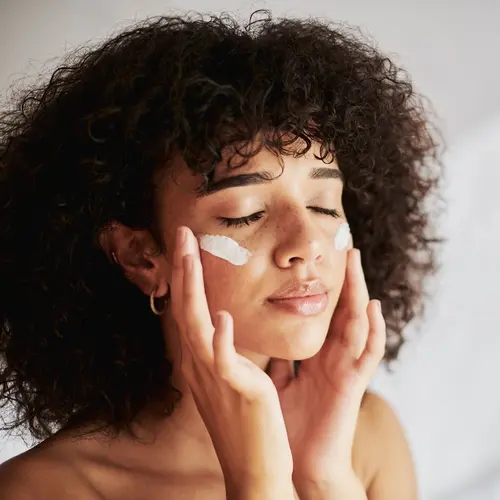"You look fantastic! Have you been losing weight? Did you get a new haircut? What's different?"
Have you ever imagined walking into work after a long weekend and being greeted with these reactions? You'd smile a secretive grin and never let slip the truth: You had "work done" Thursday afternoon, just a quick nip and tuck, in time to look fabulous Monday morning.
Is that really possible? Can the shorter, simpler cosmetic surgeries and techniques that some surgeons call "lunchtime procedures" get you in and out the door and recovered in time to go back to work or on your midweek date without a telltale bruise? Well, yes and no.
"There are a whole basket of procedures that have been promoted as 'mini-procedures,'" says Clark O. Taylor, MD, DDS, president of the American Academy of Cosmetic Surgery. "These include small things like lip lifts, non-ablative laser therapy of the skin, Botox, and minimal incision, local anesthesia procedures like some facial implants and syringe liposuction. Some of those have minimum down time of a number of days."
But don't expect maximum results with a minimal investment. "There really is no magic wand, and it's proportional, pretty much down the line. The greater your need for change, the bigger the procedure needs to be," explains David Metzner, MD, a Louisiana aesthetic plastic surgeon and clinical professor at Louisiana State University School of Medicine. "I've said that a mini-facelift gives a mini-result for a mini-period of time. It's a false notion to think that a little procedure can correct major problems or give results that last."
Mini-New-Me Options
One of the longest-lasting changes you can hope for with minimally invasive cosmetic surgery might be from body sculpting with the use of syringe liposuction. Keep in mind, this is not for the Carnie Wilsons and Al Rokers of the world who opt for major weight-loss surgery. "If you're at or very close to your ideal body weight, and you have some local accumulation of fat deposits that are resistant to diet and exercise -- small imperfections, not lots of inches -- you might very well be able to have minor liposuction on Thursday and go anywhere on Monday except the gym," says Metzner.
Say, for example, you're active, healthy, and not overweight -- but years of crunches have done nothing about that little Buddha belly. "We have some newer methods of extracting fat using ultrasound to help break it up so that it's less traumatic, because you're not mechanically manipulating the tissue to get it dislodged," Taylor explains. "We use tiny punctures for the incision, so the blood loss is quite minimal. With certain types of body contouring, in three to five days many of these patients can be mostly recovered and get back to work." (But if you start overeating and lying around on the couch, that fat can come back.)
Perhaps you're not quite ready for a full facelift, but you'd like to look just a little younger, or maybe just not so tired. "Many of the endoscopic facial procedures, such as endoscopic mid-face suspension to provide minor lifting, or an endoscopic forehead lift, have minimal recovery time," explains Taylor. These surgeries still involve IV anesthesia, so you couldn't expect to be back on the job in less than three to five days. "But if you had it done on Thursday, in all likelihood you could be back in the office on Monday --maybe with a little makeup in the event of minor discoloration," Taylor says. The jury is still out on the longevity of these results, though.
Some facial implants can also be done under local anesthesia. "We have some Gore-tex implants to soften the furrows and lines on the face -- for example, the nasal-labial furrows, those lines from the corner of your nose to the corner of your mouth -- that can be atraumatically inserted through little puncture sites and closed with flesh-colored sutures," Taylor says. "Those you can do literally at the lunch hour. I just saw a patient this morning who had a lip implant yesterday. If she put on lipstick, I'm not sure you'd know."
Botox, Baby
Some of the most popular cosmetic mini-surgeries are minor facial enhancements such as Botox, collagen injections, microdermabrasion, and light chemical peels. Botox injections accounted for a whopping 28% of all cosmetic surgeries in 2002, according to the academy, with microdermabrasion next in line at almost 13% and chemical peels at 12%.
"These procedures may be particularly appropriate for patients with smaller problems and smaller needs -- typically younger patients," Taylor says. "Many people choose to use glycolic peels as part of an ongoing maintenance program for the skin. I view that as kind of an anti-aging therapy; it's protective and keeps the skin healthier and more resistant to things that cause skin problems. They'll come in and get light peels or even microdermabrasion before they have an event in the evening because they like the glow it gives the face."
"The beauty of Botox is that it's very fast and it gives a dramatic result," says Metzner. "But it doesn't last. One injection lasts on average three to four months, or six months at most."
Both Metzner and Taylor caution that you can't buy a miracle at lunchtime. "All these procedures have their place, and they're very useful for some patients, but it's vital to undergo treatment with realistic expectations," Taylor says. "A lot of different minor procedures are being recommended for a specific group of problems. But consumers must understand exactly what these procedures can and can't do. The perception that's created by the media, aided in many cases by the profession, is that you can get equivalent results without any of the expense, down time, or morbidity. In truth, the magnitude of the result you can get is usually in direct proportion to the invasiveness and aggressiveness of the procedure."
Published April 14, 2003.


